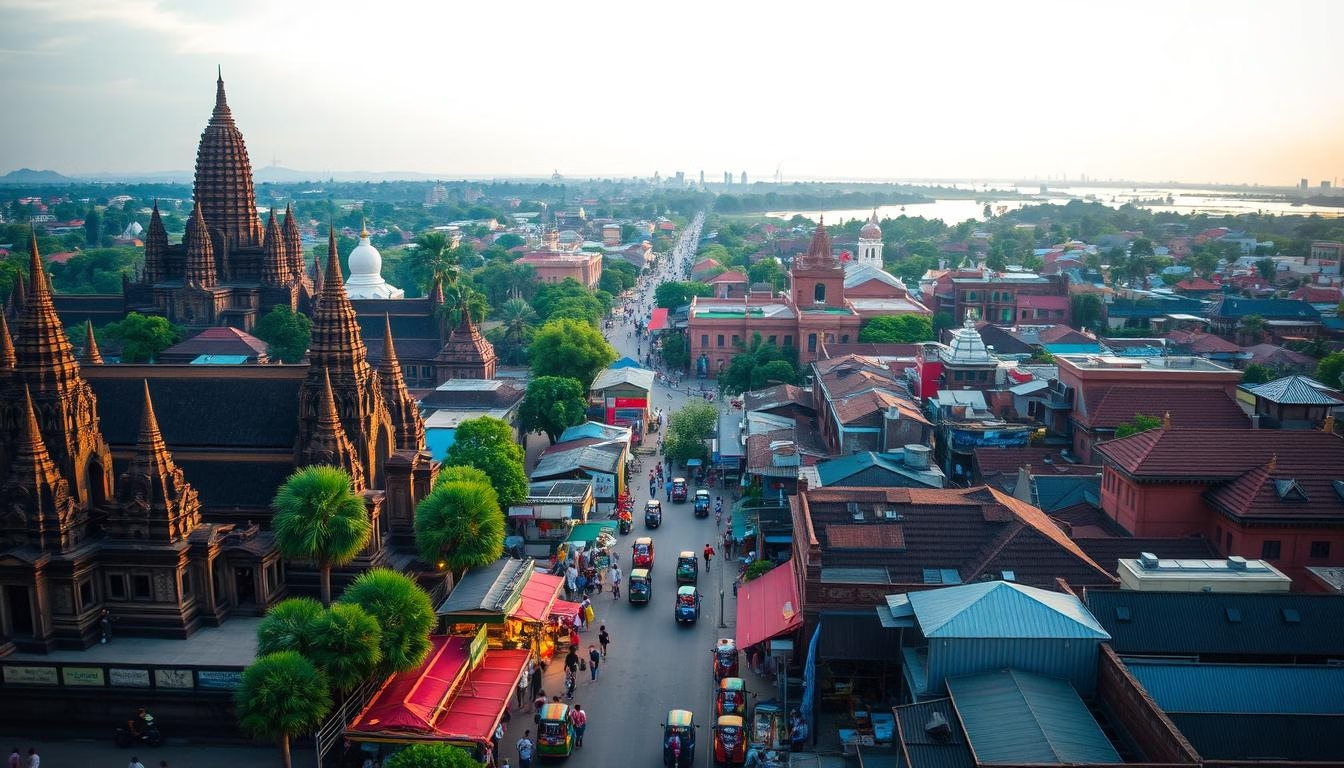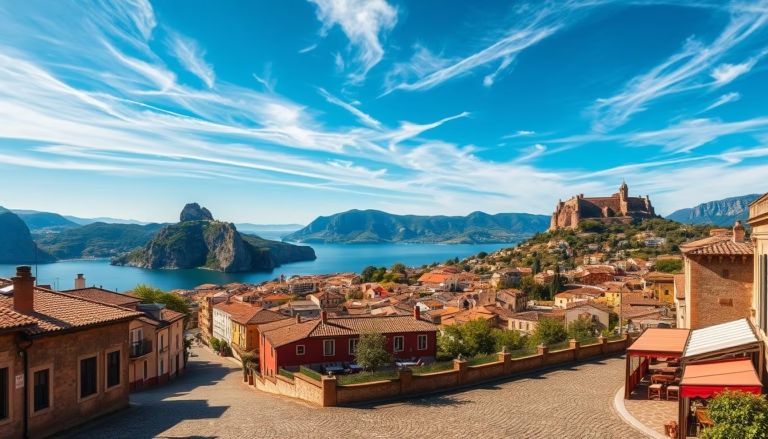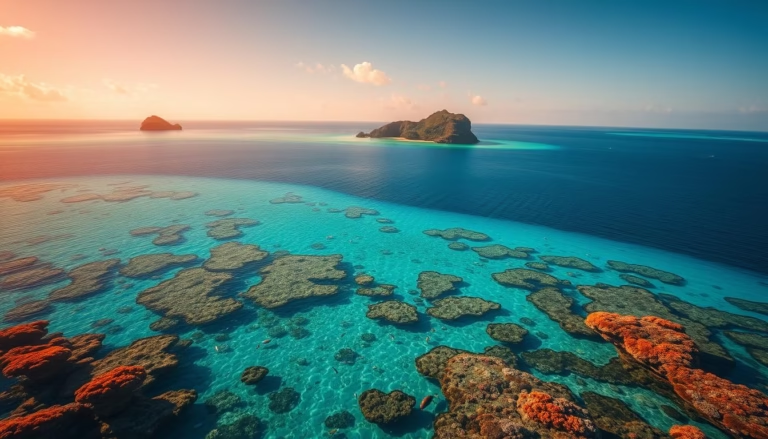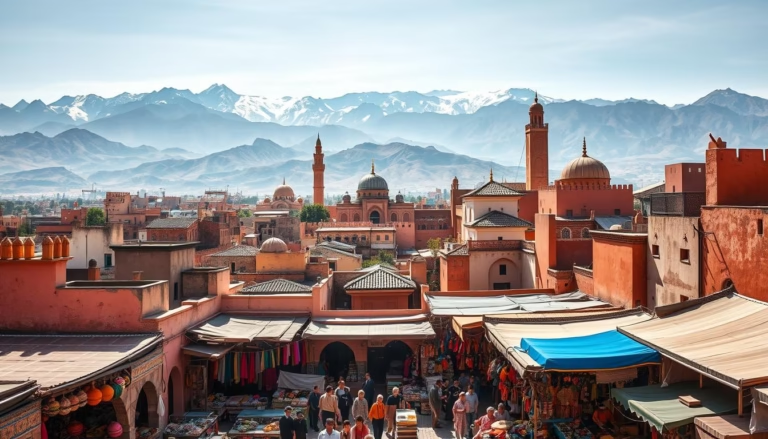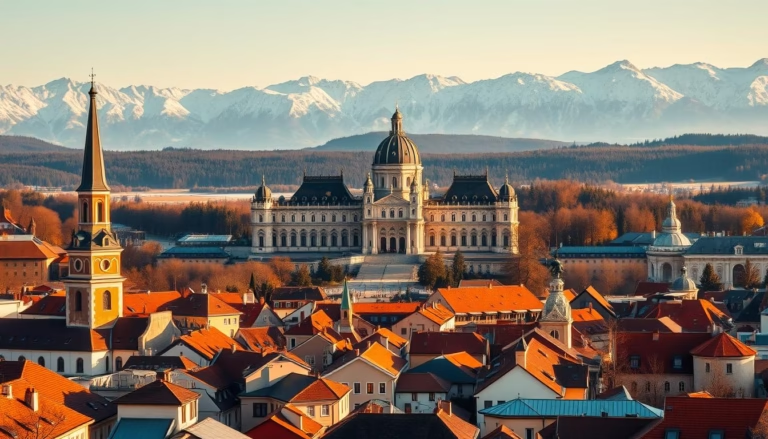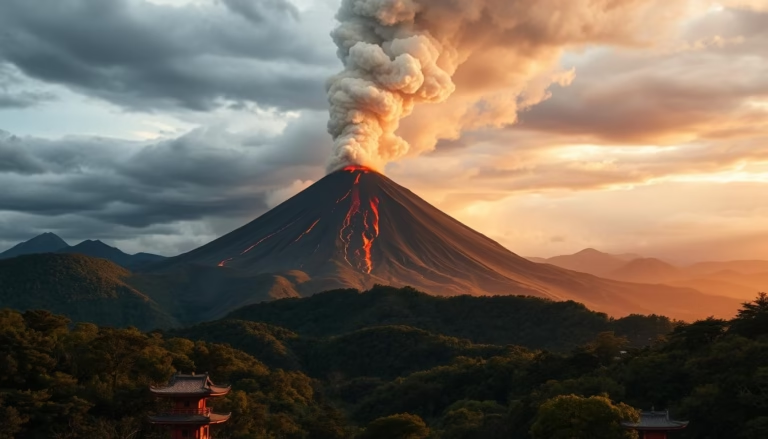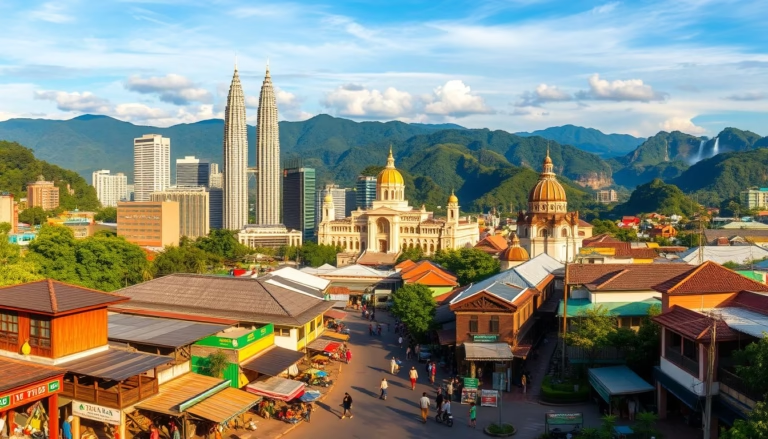Explore Cambodia: Best Cities to Visit for Travelers
Did you know Cambodia welcomed over 6.6 million international visitors in 2023? That’s a 40% increase since 2020, proving more travelers are discovering this Southeast Asian gem. Beyond its world-famous temples, the country hides urban treasures where ancient history meets vibrant modern life.
Cambodia’s urban landscapes tell stories of resilience. From the awe-inspiring ruins of Angkor to bustling markets brimming with silk and spices, every city offers a unique slice of culture. You’ll find colonial architecture in Battambang, artisanal workshops in Siem Reap, and riverside charm in Phnom Penh.
What makes these locations stand out? They balance tradition with progress. Imagine sipping coffee in a French-era café while monks in saffron robes stroll past. Or exploring 12th-century temples by morning and rooftop bars by night. This contrast creates unforgettable moments for curious travelers.
Key Takeaways
- Cambodia features UNESCO World Heritage Sites alongside thriving modern hubs
- Urban areas blend colonial history with contemporary Cambodian culture
- Coastal towns and jungle-adjacent cities provide diverse travel experiences
- The country’s recovery story adds depth to every destination
- Lesser-known locations offer authentic interactions with local communities
Introduction to Cambodia’s Timeless Charm
Step into a land where ancient stone carvings whisper tales of empires and resilience. Angkor Wat, Cambodia’s crown jewel and UNESCO World Heritage Site, stands as proof of human ingenuity from 900 years ago. But this nation’s story doesn’t end with temple ruins – it’s a living narrative shaped by kings, colonists, and courageous communities.
Where Past Meets Present
The Khmer Empire (802-1432 AD) built cities larger than Paris during Europe’s medieval age. French colonial rule later added art deco buildings beside traditional wooden houses. Though the Khmer Rouge era (1975-1979) brought darkness, the people rebuilt with remarkable strength.
A Nation Reborn
Modern Cambodia thrills visitors through contrasts. Monks collect morning alms near trendy coffee shops in Phnom Penh. Artisans polish silverware using techniques unchanged for centuries, while young chefs reinvent classic dishes. This blend creates one-of-a-kind experiences you won’t find elsewhere.
| Time Period | Historical Feature | Modern Connection |
|---|---|---|
| 12th Century | Angkor Wat construction | Sunrise temple tours |
| 19th-20th Century | French colonial architecture | Boutique hotels in Battambang |
| 21st Century | Post-Khmer Rouge recovery | Vibrant art scenes in Siem Reap |
Discover the best cities to visit in cambodia
Cambodia’s urban centers are like living museums where every street corner whispers tales of empires and everyday life. While Angkor Wat dominates postcards, the nation’s vibrant cities hold equal wonder through their blend of sacred spaces and modern energy.

Key Attractions and Cultural Highlights
Siem Reap dazzles with its proximity to Angkor’s stone temples, but don’t miss its buzzing Pub Street where traditional Apsara dance shows meet craft cocktail bars. Phnom Penh’s Royal Palace gleams with golden spires, while its riverside promenade comes alive each evening with families and street food vendors.
Battambang charms visitors with French colonial villas turned art galleries and bamboo trains zipping through rice fields. Coastal Sihanoukville offers a different rhythm – think seafood feasts on powdery beaches and boat trips to nearby islands with water clearer than glass.
Four reasons these places captivate travelers:
- UNESCO-listed temple complexes beside innovative urban design
- Night markets serving fried tarantulas and lotus-blossom teas
- Silk-weaving workshops using techniques from the 13th century
- Sunrise yoga sessions overlooking ancient reservoirs
As one local chef in Takeo told me: “Our cities aren’t just stops – they’re invitations to taste Cambodia’s soul.” Whether you’re marveling at 12th-century carvings or sipping lemongrass-infused coffee, every moment becomes a cultural conversation.
Phnom Penh: The Historical Heart and Bustling Capital
At the crossroads of three mighty rivers, Cambodia’s capital thrives as a living chronicle of resilience. Ten times larger than Siem Reap, this metropolis pulses with energy from street markets to skyscrapers. Here, saffron-robed monks pass boutique cafés where baristas craft latte art – a dance between tradition and progress.
Historic Landmarks and Memorials
The Royal Palace complex gleams with golden spires, housing the Silver Pagoda’s emerald Buddha statue. Just minutes away, the National Museum displays artifacts older than Angkor Wat itself. But Phnom Penh doesn’t shy from darker chapters – the Killing Fields and Tuol Sleng Genocide Museum honor Khmer Rouge victims with raw honesty.
Modern Vibes and Urban Exploration
Craft breweries pour lemongrass-infused IPAs beneath the Vattanac Capital Tower’s neon glow. By night, rooftop bars mix passionfruit cocktails with panoramic views of the Mekong. Don’t miss the Riverside Promenade at sunset, where families picnic and street artists sketch Cambodia’s future.
Local tip: “Start at Raffles Hotel Le Royal – its 1929 architecture tells stories of French Indochina. Then ride a tuk-tuk to Bassac Lane’s speakeasies for midnight jazz.”
Siem Reap: Gateway to Angkor Wat and Cultural Wonders
Where ancient stone giants meet buzzing night markets, Siem Reap serves as Cambodia’s cultural compass. This former provincial town now welcomes over two million annual visitors drawn to its legendary Angkor Archaeological Park – a UNESCO World Heritage site spanning 154 square miles of jungle-clad temples.
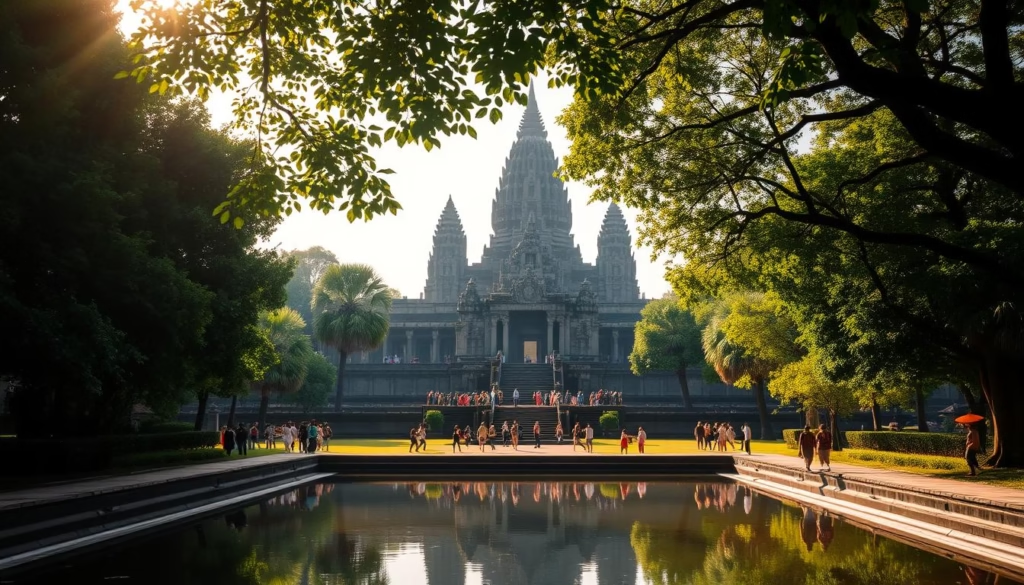
Exploring the Temples of Angkor
Dawn breaks over Angkor Wat’s lotus-shaped towers, revealing intricate carvings of Hindu epics. Beyond the iconic complex, hidden gems await. Ta Prohm’s strangler fig roots swallow 12th-century walls, while Bayon Temple’s 216 stone faces gaze mysteriously from every angle. Local guides at these sacred sites share stories of Khmer Empire glory days.
Three temple experiences stand out:
- Cycling through Angkor Thom’s ancient city gates
- Watching golden light bathe Banteay Srei’s pink sandstone
- Discovering Preah Khan’s moss-covered corridors
Cultural Experiences and Nightlife
When temple fatigue sets in, Siem Reap’s creative energy revives. Artisans hammer silverware using techniques from Jayavarman VII’s reign. Chefs blend lemongrass and Kampot pepper in cooking classes. As one restaurant owner told me: “Our food tastes like history you can swallow.”
By night, Pub Street pulses with fire dancers and passionfruit mojitos. Yet quiet moments exist – Apsara dancers twirling in candlelit courtyards, or night markets selling handwoven ikat scarves. Whether sipping craft beer or touring floating villages on Tonle Sap Lake, Siem Reap keeps rewriting its ancient story.
Battambang and Takeo: Colonial Charm and Ancient Temples
Beyond Cambodia’s famous temple trails lie provincial gems where history lives in quiet streets and weathered stones. Battambang’s sun-bleached colonial facades contrast with Takeo’s moss-covered ruins, offering two distinct chapters in the nation’s story.
Colonial Influences and Local Markets
Battambang’s downtown feels like a French postcard from the 1920s. Mustard-yellow shophouses with wrought-iron balconies line streets shaded by rain trees. The central market buzzes with vendors selling silkworm snacks and handwoven baskets. “Our markets are living museums,” says a silk weaver spinning golden threads.
Don’t miss the bamboo train – a rattling ride on makeshift tracks through rice fields. Locals invented these wooden platforms to transport goods, creating an accidental tourist attraction. It’s Cambodia’s quirkiest blend of practicality and fun.
Ancient Temples and Scenic Countryside
Battambang’s hills hide temples older than Angkor. Climb Phnom Sampeau’s 980 steps for sunset views over emerald paddies. Nearby, Phnom Banan’s five towers mirror Angkor Wat’s early design.
Takeo reveals Cambodia’s origins at Phnom Da, a 6th-century heritage site built 300 years before Angkor. Brick towers rise from flooded fields, showing Hindu-Buddhist transitions. Farmers still plow surrounding lands with water buffalo, unchanged for centuries.
| Feature | Battambang | Takeo |
|---|---|---|
| Architecture | French colonial shophouses | Pre-Angkorian brick temples |
| Transport | Bamboo train rides | Boat trips to Phnom Da |
| Landscape | Rice fields & limestone hills | Floodplains & ancient canals |
Coastal Delights: Sihanoukville and Island Escapes
Cambodia’s southern coast reveals a different rhythm – one where turquoise waves replace temple trails. Sihanoukville acts as your launchpad to this aquatic wonderland, blending bustling seafood markets with golden stretches of sand. Just offshore, untouched islands float like emeralds in sapphire waters.
Beachside Bliss and Active Shores
Ochheuteal Beach dazzles with its mile-long curve of golden sand. Try kayaking through calm bays or racing jet skis across sun-dappled waves. Local boat captains offer sunset cruises where you’ll spot flying fish skimming the surface.
Hidden Worlds Beneath the Waves
The Koh Rong archipelago shelters rare seahorses in its coral gardens. Snorkelers glide past rainbow-colored fish at Long Beach, where sand squeaks underfoot. On Koh Rong Samloem, beach huts face waters so clear you’ll see starfish from your hammock.
Pro tip: “Take an early boat to Bamboo Island – you might have its powdered-sand beaches all to yourself.” Whether diving shipwrecks or sipping coconut cocktails, Cambodia’s coast delivers paradise without the crowds.
